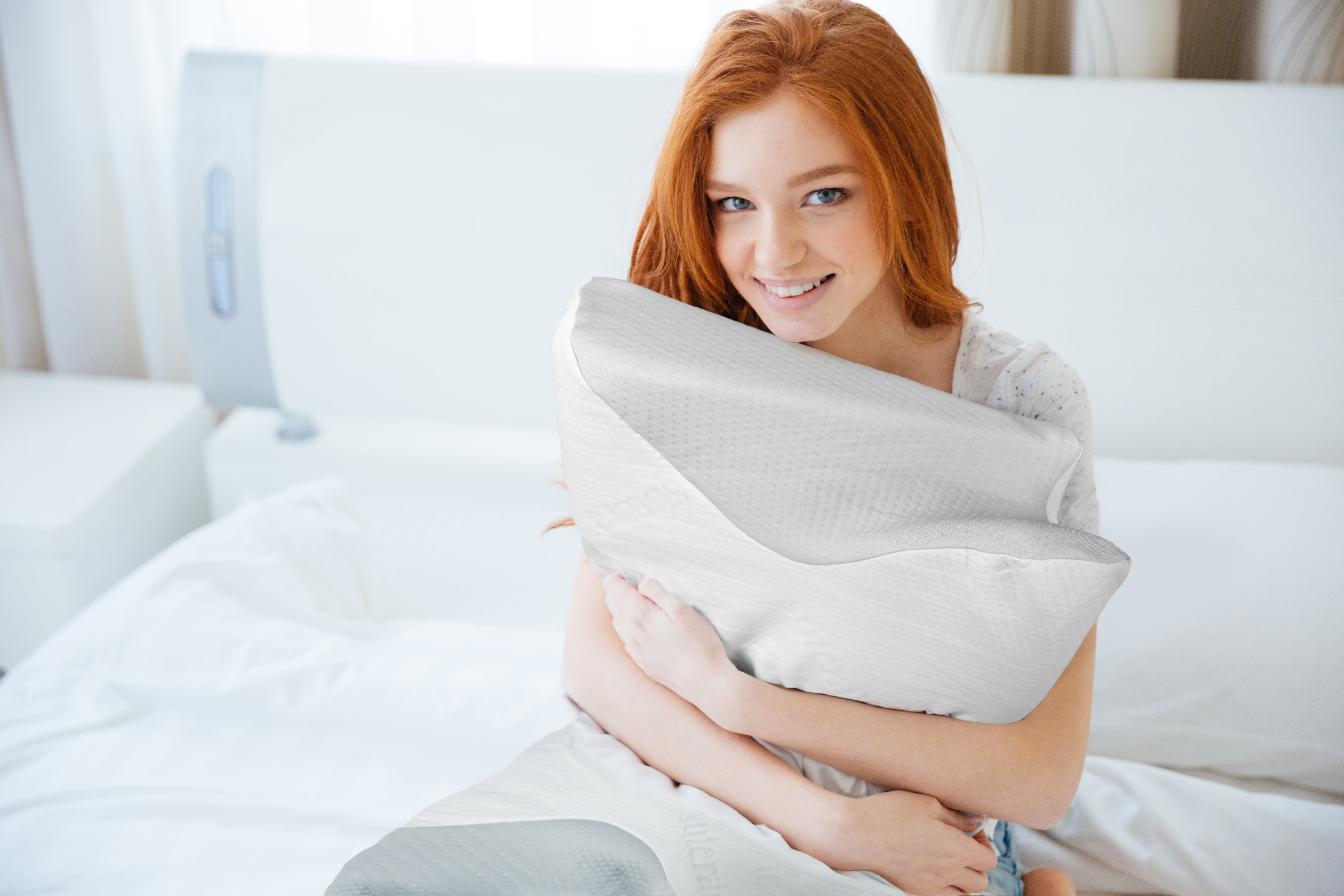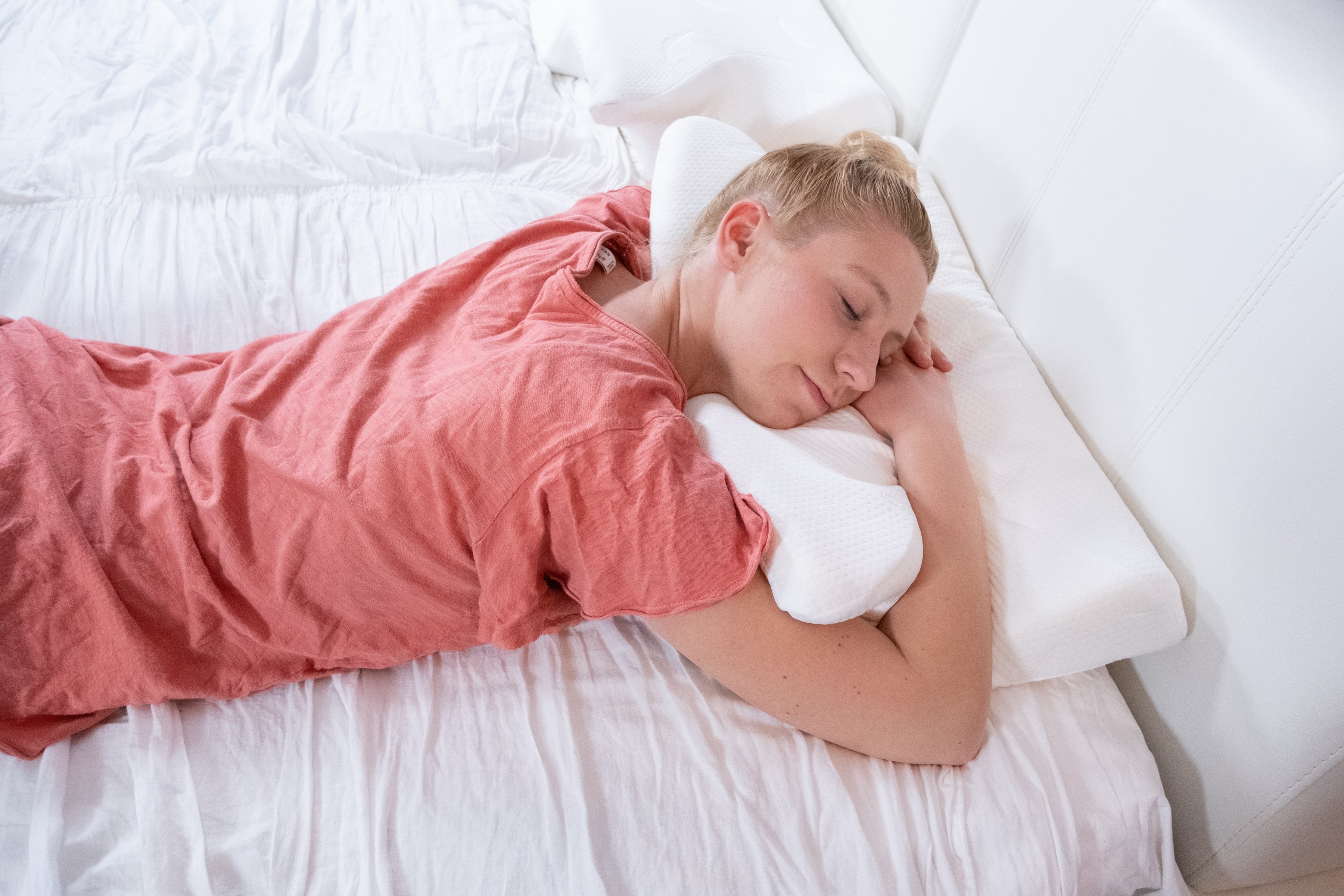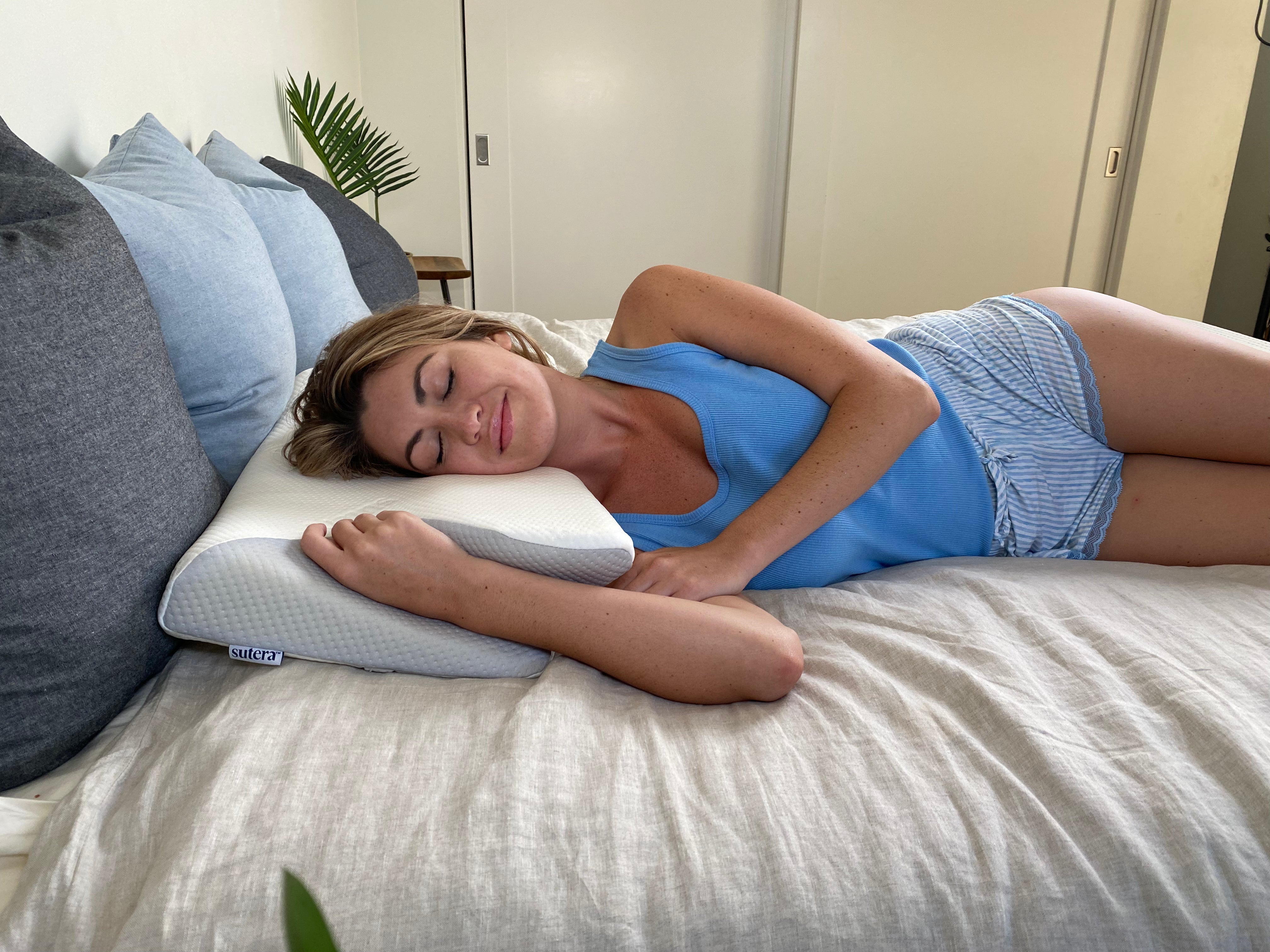*Understanding the engineering that transforms your sleep*
Most people choose pillows based on how they feel for the first 30 seconds. Soft, firm, medium - these descriptions tell you almost nothing about whether a pillow will actually support your health throughout 6-8 hours of sleep.
Related: Dream Deep Orthopedic Pillow, Sleep Transformation Guide, Pillow Size Guide
After years of research into sleep biomechanics and working with sleep specialists, we've learned that truly supportive pillow design requires understanding the complex engineering of your cervical spine, the physics of pressure distribution, and the materials science that maintains consistent support night after night.
The Cervical Spine: More Complex Than You Think
Your neck isn't just a simple connection between your head and body - it's a sophisticated suspension system with multiple curves, joints, and pressure points that all need to stay in proper alignment during sleep.
The Natural Cervical Curve
A healthy cervical spine has a natural C-shaped curve (lordosis) that distributes weight evenly and maintains proper spacing between vertebrae. When you lie down, this curve needs to be supported regardless of your sleep position.
Traditional pillows either fill the space under your neck (creating hyperextension) or fail to support the curve (causing compression). Both scenarios lead to muscle tension, restricted blood flow, and morning pain.
Sleep Position Biomechanics
Side Sleepers: Need consistent support for the space between their shoulder and head - typically 4-6 inches depending on shoulder width.
Back Sleepers: Require gentle support that maintains the natural cervical curve without pushing the head too far forward.
Stomach Sleepers: Need minimal loft to prevent neck hyperextension, but still require pressure distribution for comfort.
The Engineering of the Dream Deep Pillow
Contour Wave Technology
Our signature contour design isn't just about aesthetics - it's precision engineering based on cervical spine biomechanics. The wave shape provides different support zones for different parts of your head and neck.
Higher Contour Zone: Supports the natural cervical curve for side sleeping
Lower Central Zone: Accommodates back sleeping without over-extension
Transition Areas: Allow comfortable position changes during sleep
Memory Foam Physics
Not all memory foam performs the same way. Our formulation is designed for optimal pressure distribution and temperature regulation:
- Pressure Response: The foam responds to both heat and pressure, conforming gradually to your unique contours
- Recovery Time: Engineered to bounce back when you move, maintaining support throughout position changes
- Temperature Stability: Formulated to maintain consistent support across normal body temperature variations
The Science of Pressure Point Relief
Understanding Pressure Mapping
When your head rests on a surface, weight distribution isn't even. Certain points (back of skull, jaw, temples) bear more pressure than others. Poor pressure distribution restricts blood flow and creates discomfort that interrupts sleep cycles.
Advanced pressure mapping technology shows that contour design can reduce peak pressure points by up to 40% compared to traditional flat pillows.
Circulation and Sleep Quality
Proper pressure distribution isn't just about comfort - it's about maintaining healthy circulation to your brain and facial tissues throughout the night. Restricted blood flow can contribute to morning headaches, facial puffiness, and that "slept wrong" feeling.
Materials Science: What Makes Support Last
Memory Foam Durability
Quality memory foam maintains its supportive properties for years, but inferior foams lose their ability to conform and recover. Our foam is tested for:
- Compression Set: How well it returns to original shape after prolonged compression
- Fatigue Resistance: Ability to maintain properties through thousands of sleep cycles
- Temperature Stability: Consistent performance across varying room temperatures
Hypoallergenic Properties
Beyond comfort, pillow materials need to resist allergens that can disrupt sleep. Our memory foam is naturally resistant to dust mites and mold, creating a healthier sleep environment.
The Lavender Zen: Aromatherapy Meets Engineering
The Science of Scent and Sleep
Lavender isn't just pleasant - it has measurable effects on the nervous system. Research shows that lavender aromatherapy can:
- Reduce cortisol (stress hormone) levels
- Increase time spent in deep sleep phases
- Lower heart rate and blood pressure
- Improve overall sleep quality ratings
Controlled Release Technology
Our lavender infusion is engineered for subtle, long-lasting aromatherapy. The scent is embedded in a way that provides gentle, consistent release without overwhelming sensitivity or fading quickly.
Common Pillow Science Myths Debunked
Myth: "Firmer is always better for support"
Reality: Support comes from proper contouring, not firmness. A pillow can be firm yet fail to support your cervical curve, or be soft yet provide excellent pressure distribution.
Myth: "You need to replace pillows every year"
Reality: Quality materials maintain their properties for years. The "yearly replacement" recommendation often comes from pillows that lose their shape due to inferior construction.
Myth: "One pillow works for all sleep positions"
Reality: Different sleep positions create different support requirements. The best pillows accommodate multiple positions through thoughtful design rather than one-size-fits-all approaches.
Measuring Pillow Performance
Objective Sleep Metrics
Modern sleep tracking can measure how pillow support affects:
- Sleep efficiency (time asleep vs. time in bed)
- Movement frequency during sleep
- Time spent in different sleep phases - Morning recovery heart rate
Subjective Quality Indicators
Beyond measurements, quality support creates noticeable differences:
- Falling asleep faster
- Fewer position changes during night
- Waking up without neck or shoulder tension
- Feeling mentally refreshed upon waking
The Future of Sleep Support Technology
Smart Materials
Emerging technologies include memory foams that adjust firmness based on body temperature, and materials that actively promote cooling for temperature regulation.
Personalized Design
3D scanning and custom manufacturing are making personalized pillow design more accessible, creating support systems tailored to individual anatomy.
Integration Technology
Future sleep systems will integrate pillow support with mattress design and environmental controls for comprehensive sleep optimization.
Choosing Pillows Based on Science, Not Marketing
Key Performance Indicators
When evaluating pillow design, focus on:
- Contour Design: Does it accommodate your cervical spine anatomy?
- Material Quality: Will it maintain properties over time?
- Pressure Distribution: Does it eliminate pressure points?
- Position Adaptability: Does it work for your preferred sleep positions?
Testing and Adaptation
Quality pillow companies offer trial periods because they understand that proper support takes time to evaluate. Your neck muscles may need several nights to adapt to proper alignment.
The Health Investment Perspective
Cost of Poor Sleep Support
Chronic neck and back pain from poor pillow support can lead to:
- Medical consultations and treatments
- Reduced productivity and energy
- Mood and cognitive impacts
- Long-term postural problems
Return on Investment
Quality sleep support pays dividends in:
- Reduced pain and tension
- Improved daily energy and mood
- Better long-term spinal health
- Enhanced overall quality of life
Frequently Asked Questions
How do I know if I need an orthopedic pillow?
If you wake up with neck stiffness, headaches, or feel tired despite 7-8 hours in bed, you likely need better cervical support. These are signs of poor spinal alignment during sleep.
What's the difference between memory foam and regular pillows?
Memory foam responds to heat and pressure, molding to your unique shape for personalized support. Regular pillows provide generic cushioning that doesn't adapt to individual anatomy.
How long do orthopedic pillows last?
Quality orthopedic pillows like the Dream Deep maintain their supportive properties for 3-5 years, versus 6-12 months for traditional pillows that lose shape and support quickly.
Conclusion
Understanding the science behind orthopedic pillows helps you make informed decisions about your sleep health. True support isn't about firmness or softness - it's about engineering that works with your anatomy to maintain proper alignment and pressure distribution throughout the night.
At Sutera, we combine materials science, biomechanical engineering, and sleep research to create pillows that deliver measurable improvements in sleep quality and morning comfort.
Ready to experience the difference that scientifically-designed sleep support makes? Visit [www.sleepsutera.com](https://www.sleepsutera.com) to discover pillows engineered for your health, not just your comfort.







Share:
Wellness Bedroom Design: 12 Science-Backed Ideas for Better Sleep (2025)
The Hidden Connection Between Sleep and Immune System Health